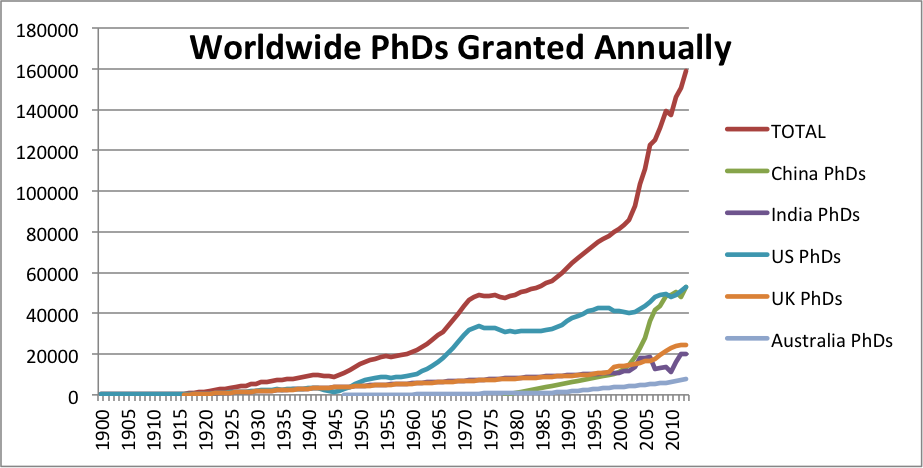A few days ago journalist Barney Calman published a thorough and well researched article about the problem of academic research fraud. Although the contents will seem familiar to any long time reader of the Daily Sceptic, it’s great news that much bigger audiences are now being exposed to information about the scale and nature of the problems inside scientific institutions.
In July the Daily Sceptic published an article by me entitled, “Photoshopping, fraud and circular logic in research“. It discussed the problem of Asian paper forging operations colloquially nicknamed “paper mills”, the Chinese Government policies that incentivise forging of scientific research, and cited former BMJ editor Richard Smith’s essay on the problem of fictional clinical trials. For classical journalists to write about a topic typically requires them to find an insider or specialist willing to put their own name on things – indeed, one of the major weaknesses of newspapers vs blog sites like this one is their reluctance to do original research into scientific topics. Scientists willing to put their names on allegations is the permission journalists need to cover a story like this – and now the Mail has it:
Speaking on the Mail on Sunday’s Medical Minefield podcast, Smith – who was involved in the investigations that exposed Malcolm Pearce – said:
“It’s shocking, but common. Many of these fraudulent studies are simply invented. There were no patients. The trial never happened.”
Research coming out of countries where doctors are commonly rewarded with pay rises for publishing their work – such as Egypt, Iran, India and China – is more likely to be faked, investigations show.
“In China, doctors can only get promoted if they score enough ‘points’, by getting published,” says John Carlisle, an NHS anaesthetist who spends his spare time hunting for fraudulent medical studies.
Calman cites many examples of serious research fraud:
- Malcolm Pearce, who created a non-existent pregnant women he claimed to have saved from an ectopic pregnancy and who forged a drug trial.
- Werner Bezwoda, who falsely claimed he had cured women with breast cancer by giving them bone marrow transplants.
- Eric Poehlman, the only one ever jailed for research fraud, who fabricated studies into weight gain and the menopause.
- Woo Suk Hwang, who became a national hero in South Korea after claiming a breakthrough in stem cell research that never actually happened.
- Joachim Boldt, who forged a staggering 90 studies into drugs for regulating blood pressure during surgery. “These trials had been published over many years in leading journals, but it turned out they had never happened,” says Ian Roberts, Professor of Epidemiology at the London School of Hygiene and Tropical Medicine. “Again, when they were excluded from the review, it showed the treatment was not effective. British surgical guidelines had to be changed. It made me realise, if someone can get away with fabricating 90 studies, the system isn’t working.”
The story also discusses how the scientific system has been unable to reach agreement on the effectiveness against COVID-19 for both hydroxychloroquine and ivermectin, largely due to how high profile trials showing efficacy keep turning out to be fraudulent.
There’s much more and the entire article is, of course, worth reading in full.
Analysis
Smith zeros in on the core problem: the scientific system is entirely trust based. If someone emails a Word document containing a table of results to a journal, then it’s just assumed that the trial did in fact take place as written. The document itself is supposed to be reviewed, although as we’ve previously discussed here peer review is sometimes claimed to have happened when it very obviously couldn’t have. But nobody checks anything deeply. Peer reviews, when they properly happen, take the intellectual honesty of the submitter for granted.
This system was probably okay at the start of the 20th century when science was a small affair dominated by hobbyists, companies and standalone inventors. It’s easy to forget that Einstein, perhaps the most celebrated scientist of all time, came to the attention of the world only after developing new physics in his spare time whilst working as a Swiss patent clerk. But after the end of World War Two governments drastically ramped up their spending on academic research. Throughout the 20th century science didn’t just grow, it grew exponentially (nb. log scale):

In the second half of the 20th century, the number of papers published annually was doubling about every nine years, with the end of the war being a clear inflection point.
A century ago there was very little incentive for a scientist to lie to a journal. There was no point because there wasn’t much money in it. Academic positions were rare, the communities were small, and there were few enough interesting claims being published that they’d attract attention and be discovered if they weren’t true. But in 2021 it’s all very different. Annual production of new scientists by academia alone is vast:

The effect Chinese policies have had on science can be clearly seen in this graph, but even before China more than doubled its PhD production the trend was strongly upwards.
Underlying this system is an implicit assumption that the number of discoveries waiting to be made within a given time window is unlimited. Giving scientists money is seen as an uncontroversial vote winning position, so nobody in government stops to ask whether there are actually enough answerable scientific questions available to absorb the increased research budgets. If there aren’t then people become tempted to either make up answers, as in much of the COVID ‘science’ that is written about on this site, or make up questions, hence the proliferation of un-rigorous fields like the study of “white tears“.
Did Barney Calman get wind of this story by reading this site? It’d be nice to think so. If you’re out there Barney, why not drop us a line and say hello? There are plenty more investigations like that one in the archives of the Daily Sceptic, such as “Fake Science: the misinformation pandemic in scientific journals” and “436 randomly generated papers published by Springer Nature“, which examine the use of AIs to generate fake scientific papers, or “The bots that are not“, which shows that virtually all academic research into the existence of bots on Twitter is wrong. It’s of vital importance that our society becomes more aware of the flaws in the research system, as it’s the only way to break the cycle of governments and media taking so-called scientific claims for granted.











To join in with the discussion please make a donation to The Daily Sceptic.
Profanity and abuse will be removed and may lead to a permanent ban.
Not unrelated; some truth in that!
Here’s seven signs that show Western civilization could soon end
Excellent- nutjob conspiracy theories about the decline and fall of our civilisation are now in the Daily Mail.
A similar thing that happened to the Yeoman farmers happened to WW1 Landowners who died in battle:https://www.youtube.com/watch?v=kmwsb9j4tWU&t=2s
How long in weeks was the life expectancy of a lieutenant on the Western Front?
From what I heard shorter than the regular soldier. How is that relevant to the Royals hovering up their land?
But, did they?
https://x.com/CilComLFC/status/1878137821443072396
And here is a perfect example of wokeism being put out by the Welsh government.
I think most here would consider this enticement. Doubtless for the ROPers this is aimed at it is surely just a permission notice for when the RNLI drops them off. So it really, really, really is NOT their fault.
Absolutely sickening.
And more fool us for not hanging the sons of birches
They’re taking the mickey.
Talking of wokeism, Arsenal are playing in all white today to show red a red card – or some shit like that. I don’t know what moron designed the shirts – Stevie Wonder perhaps – given that the shirt numbers are also white with the thinnest of black outlines. and the reason is to virtue signal about knife crime in London. Obviously missed the knighthood given to a man who has seen a huge growth in knife crime on his watch.
I think Casey is basically right. The parallels are undeniable.
It cn be bloody hard to see the way back from the destruction we have allowed to be wrought upon our magnificent civilization.
The rape gangs scandal may well come to be seen as a watershed moment – in one way or the other.
As a science student at the time, viewing Dr Jacob Bronowski’s landmark 1973 BBC series “The Ascent of Man” was a formative scientific experience.
The series began with primitive man’s first migration from Africa’s Rift Valley, and in a 13-episode tour de force went on to explain how science and technology had been so fundamental to Western civilisation.
In the final episode, Dr Bronowski concluded by stating that the ascendancy of Western civilisation could not be taken for granted. Prophetic words begin at around 36 minutes in:
https://www.bbc.co.uk/iplayer/episode/p0g1kpd9/the-ascent-of-man-13-the-long-childhood
The good Doctor’s last testimony to the future, he died the following year.
I’m amazed it has not been more widely denounced as racist. Probably helps that some of his family were apparently killed in Auschwitz.
I’m inclined to think you can’t judge the past by the mores of the present, verities tend to outlast the temporal and -isms can be in the eye of the beholder.
I’d always assumed the death of his family at Auschwitz to be as told in an earlier episode of the series.
I am certainly not judging him, just suggesting that it’s likely sooner or later that his probable neglect of the “achievements” of various races and focus on the achievements of White people will make him a Bad Person in the eyes of the madleft as one of our fellow posters calls them.
I have no idea whether the Auschwitz story is true or not, just saying it might have bought him some brownie points (I did find one commentator who posited that JB might be a racist but dismissed it because his family were victims of the holocaust – illogical bollocks but there you go).
Bollox is as bollox says and does.
Wokeism is dead as dead as the green agenda. It might not look that way yet but all it takes is a certain tightening of material well-being and all of this fancy thought disappears very rapidly. You quickly understand that the people that you need to value are the people who offer the best chance of survival.
I think the worm is turning but the war is not yet won.
We are at Alemein, not D Day.
“Before Alamein we never had a victory, after Alamein we never had a defeat.”
There was Operation Market Garden though.
It has gone. Spengler talked about this stage, home economicus. The bankers say inflate or die. That means lots of war because it is the greatest inflationary pressure. The West is now severely overstretched militarily. Sadly a school of thought has grown up in the last 25 years among the Anglo-Americans that a nuclear war is essentially winnable. They really believe it and they talk about it openly now. If this permanent bureaucracy isn’t somehow dislodged very quickly then only blind and mindless destruction can follow.
There was a British study in 1985 if I recall. which looked at the effect of a single nuclear weapon hitting the UK. It concluded that even if all the hospital beds were empty the health system would still be completely overwhelmed by such an event. And that was at a time when the NHS was healthier than it is now. I strongly disagree with this doctrine of escalation to nuclear as if it is just another step.
I do believe there were parts of East England that had radiation contamination from the Chernobyl accident.
There is a good documentary, I forget the name about a huge undergoround site in Finland where they try to bury all the nuclear waste products. You can put it in the ground or under the sea but you can’t undo the dark magic. Can any civilisation survive when it has developed tools that can blow itself to pieces. The idea the nukes will be left on the shelf forever. I would say no destruction is assured. Maybe then we rise up again, as Plato said of the post-Atlantean period, like children with no recollection of what went before.
We’re all doomed.
To underline what is happening, the corrupt legal system we have (refer to Paul Barret’s YouTube posts about Tommy Robinson for example) there are other examples, is another step towards the failure of our civilisation unless we can have legal proceedings accurately monitored and corrected when they go wrong.